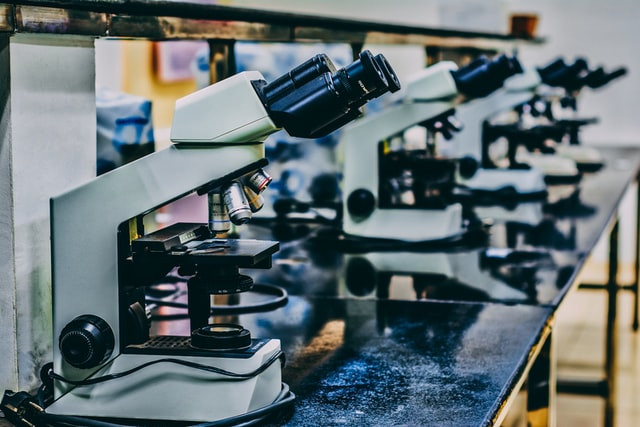
23 min
0
02.14.2023

The biology paper helps the student systematically show theoretical knowledge in the studied discipline and master the primary skills of research work: collect data, analyze, think creatively, formulate conclusions, proposals, and recommendations on research. Here is an excellent opportunity to properly organize research work, formalize its results, and show that you have learned in the field of biology.
The work's performance should contribute to the lecture course's in-depth assimilation and the acquisition of skills in solving practical problems. This requires the student to know general and special literature on research, connect theory with practice, make generalizations, and formulate conclusions and proposals.
This work has its specifics; its details must agree with the supervisor on the structure, writing methods, and design. The following algorithm for its implementation will help to rationally organize work on paper, correctly allocate your time, and develop the chosen topic:
- selection of biology topics;
- search for literature on the topic;
- formulation of goals and objectives of the document;
- choice of object and research methods;
- drawing up a plan, agreeing on it with the head;
- performing research document;
- analysis of research results;
- writing sections and subsections;
- editing the introduction, formulating conclusions and recommendations;
- preparation of the list of references and applications;
- literary and technical design of the document, mistake correction.
Now that you know how to write a lab report and achieve success, let's move on to the next step.
What Is Biology?
Biology is a science that studies the growth and development of organisms, evolution, patterns of existence, and characteristics and behavior in nature. Because the laws of chemistry and the chemical features of organisms' structure are actively combined with biology, they created a biochemistry. The study of the physical manifestations of muscle contraction movement, the joints' mechanics, determined the link between biology and physics with biophysics.
Biology task:
- Disclosure of the principles of the emergence of life, study and management of life processes, stabilization in nature.
- Introducing the necessary program into the activity of a living cell in conditions of deviation from the norm.
- Reproduction outside a living organism of synthetic processes, principles used in a live system, and introduction into chemical production.
- Environmental protection, preservation of the gene pool of living beings.
General Structure of a Biology Paper
Scientific work in biology is an essential document in studying that should show your awareness of a particular topic. Implementing this project requires time, knowledge, and the ability to search for the necessary information in scientific and electronic libraries.
It is practically impossible to get by with electronic resources when writing a paper. Firstly, there is a tendency on the Internet to commercialize educational resources: very often you need books, you can only download them by paying money. Secondly, large passages from the textbooks you study should not be used in the document; this is considered plagiarism.
First of all, paper is your scientific research with an ideal structure, with examples of distinguished scientists, previously researched this scientific issue, and not a presentation of material from textbooks. When writing your document, you adhere to the structure and requirements. General sections article are:
- Abstract.
- Introduction.
- Methods.
- Results.
- Discussion.
Abstract
The paper needs to annotate. Typically, this work description consists of simple sentences that summarize the main points. The material contained in the summary is often neutral. It briefly presents the research that conducts in the document. There are only two in summarizations: advisory and reference.
The reference material contains information about the author of the text and the genre of work. The advisory annotation briefly describes the material contained in the text. In the description, a small advertisement for the work is acceptable to arouse the reader's interest. However, exaggeration of the merits of the work is unacceptable. Annotation is built based on the following structure:
- Title of the work.
- Who is the author and supervisor of the work?
- Summary (abstracts).
The abstract is a whole genre, so it is advisable to master writing this type of text. They have standard phrases that are characteristic of annotations. The content text is short; there is nothing superfluous in it. There will be no space for extra details - the author has only 1000-1500 characters of the text at his disposal.
Here's an example of an abstract for a paper on the immune system.
This paper provides a detailed examination of the human immune system, focusing on its cellular and molecular components. The study investigates the roles of key immune players such as T cells, B cells, antibodies, and cytokines, elucidating their coordinated responses. The research explores both adaptive and innate immunity, emphasizing their collaborative efforts in defending against pathogens. Additionally, the paper delves into immunological memory and its relevance to vaccine development. Methodologically, we employ a systematic approach to analyze existing literature, integrating findings to present a holistic view of immune system functionality. The insights gained from this study contribute to advancing therapeutic strategies for infectious diseases and autoimmune disorders.
Introduction
Introduction is an obligatory structural element of the project, which contains the relevance of the research, objectives, purpose, object, subject of study, scientific hypothesis, analysis of sources and literature, etc. This is the cornerstone of the entire work, which sets the tone for the study and directly affects assessment. The introduction is 1-2 pages long.
In all research papers, the introduction has a uniform structure. Before writing an introduction, it will be useful for you to contact your supervisor for methodological recommendations for writing work in your educational institution. Thanks to the teacher's guidelines, you can get acquainted with introducing and seeing the lab report example.
Returning to the official requirements, the introduction should contain the following data:
- assessment of the state of the problem that the student raises in his research;
- initial data;
- substantiation of the relevance and scientific significance of the study;
- a description of the relationship between the research and existing scientific documents, in which the author raised the problem.
Let's see an example of an introduction for a paper. Note that it's a shortened version that doesn't specify the scientific documents; use it only as a guide for your own.
This study delves into the intricate landscape of the human immune system, aiming to address identified gaps in current research. Our initial data, drawn from a thorough review of scientific literature, forms the basis for a systematic analysis of the system's cellular and molecular components. The relevance and scientific significance of this study are grounded in the crucial role the immune system plays in maintaining human health and combating diseases.
Our research builds upon existing scientific documents that have highlighted the identified problem, establishing a clear connection with prior work. By contextualizing within the existing scientific discourse, we acknowledge previous contributions while presenting new avenues for exploration. This interdisciplinary approach aims to enrich our understanding of the immune system, with implications for therapeutic advancements in infectious diseases and autoimmune disorders.
Methods
The section describes the research methodology, including generally accepted general scientific and unique botany methods, described in scientific monographs, methodological literature, and scientific papers collections. The conformity of the ways to the research task determines the representativeness of the obtained results and their further interpretation's objectivity.
This section describes field and laboratory research (botanical, morphological, anatomical, geobotanical, etc.), algorithms for analytical research.
If the work is devoted to the study of flora, this section describes the route method, test sites, transects, catens, ecological series, the technique of making herbariums, etc. It is obligatory to use mathematical modes of processing the obtained results (percentage content, arithmetic mean, the error of the mean, confidence intervals, etc.)
Methodological issues are quite complicated since the concept itself is interpreted in different ways. Many scientific schools do not distinguish between methodology and research methods. In the scientific tradition, the methodology is considered the method of cognition or a principles system based on the research. The choice of a set of cognitive means, methods, and research techniques carried out. The technique is understood as a set of research, including various operations with factual material.
Example:
This study unfolds through a methodical exploration of the human immune system, guided by a systematic and comprehensive approach:
System Dynamics Exploration:
We construct a systematic framework to dissect the intricacies of the immune system, unraveling the relationships and interactions between its key components. Each element is scrutinized within the context of the broader immune response.
Comparative Contextualization:
Our approach involves a comparative analysis with existing scientific documents that have previously addressed the identified problem. This juxtaposition sheds light on the contributions of past researchers and elucidates unexplored avenues.
Interdisciplinary Integration:
To enrich our study, we position our research within the broader interdisciplinary context of immunology. Insights from related fields are considered, offering a holistic perspective on the complex dynamics of the immune system.
...
Results
A logically organized and well-written Results section is critical to a well-written article. The Results section should present the data collected during the study as objectively, logically, and concisely as possible. Highlighting the most important results or organizing them into sections is an excellent way to show that you have covered all the information you need. Correct use of visual elements, i.e., tables and figures, are an effective way to interest your readers.
So, essentially, in the Results section, you should do the following:
- Report only actual results;
- Use tables and figures in the text to orderly highlight key results;
- Make sure that the contents of tables and figures are not repeated in the text.
Discussion
While there is no fixed formula for writing a Discussion section, you can follow a few simple steps to complete a High Impact Discussion section. We present them below:
- Provide a concise summary of the central theme. A right "Discussion" section expands on specific findings to their broader implications, which can then link to the general background provided in the introduction to maximize the entire article's impact. Therefore, start the "Discussion" by providing essential information that is already known about the research topic. You can then briefly reformulate the research problem so that your Discussion section link to the Introduction.
- Interpret your results. Discuss the meaning of your research's most important results, as clearly as possible, because not all of your readers will deeply understand the topic. Discuss the relationships between the observations: do the results indicate a pattern, and can they be summarized together? But don't try to impose an interpretation on your readers; consider the results objectively. The article may reject if the results are not correctly and logically interpreted. Mention unexpected and insignificant results and do not manipulate data.
- Discuss the value of your research. This is an essential part of the Discussion. The reader should clearly understand why your research is critical. How has the research contributed to improving our understanding of a particular subject? You need to describe your research contribution to existing knowledge and how it can stimulate future research.
What Topics Are There In Biology?
The work's topic is often given by a scientific leader, taking into account the discipline's thematic plan. Their list is posted for review on the information and notice board in paper form and on the website. The student is given the right to choose a research topic from this list and is allowed to propose his topic.
The supervisor, together with the student, determines the topic of the work. The case should be relevant, important for science and practice, specific, exact with the definition of its implementation, should determine the subject of research. Its further change or correction is possible only with the supervisor's permission with sufficient justification for the student's changes. Examples of topics:
- Biology as a Science. Methods of scientific knowledge. Levels of organization of the living.
- Immune system.
- The cell as a biological system (multiple choice).
- Human organism. Fabrics. Organs.
- Behavior and hormones.
- The driving forces of evolution.
- What is cognitive science, and how is it related to biology?
- Human cloning and genetic researches.
- Struggle for existence and its forms.
- Ecology is the science of supraorganism systems - habitats of organisms.
Let's take a look at a few topics so that you know what to write about.
Human Cloning And Genetic Researches
Cloning is a processor technology for producing clones. It is customary to call a clone an organism that is genetically identical or almost identical to another. Identical twins are clones of each other, as both emerged from the same fertilized egg. Plants created by vegetative propagation, such as mustache-propagated strawberry bushes, are also clones. Let's take a look at the most famous genetic study:
How did scientists breed Dolly, the sheep? Dolly was "made" in the following way: they took a cage of the udder of a sheep, and the genetic material of this cell was "planted" in an egg taken from another sheep. In this case, its genetic material from this egg previously remove. Note that after such a transfer, the resulting egg cell had a double set of genes - the same as in the udder cell. This means that the fertilization of such an egg is not required! This egg implants into the third sheep's uterus, which carried and gave birth to a sheep - Dolly.
After Dolly, fish, frogs, rodents (rats and mice), dogs and cats, pigs, horses, and cows clone. More recently, it became known about the cloning of primates - long-tailed macaques. In general, this procedure applies to any organism; it is just that it takes a lot of time to select the optimal conditions in each specific case.
Behavior and Hormones
We often hear words like "emotions", "feelings", "experience", "mood", or words like "stress", "passion". The above mental phenomena can group under the name of emotional processes, in which someone distinguishes affects. It will not be an exaggeration to say that many of our behaviors directly depend on hormones' work.
Here are some of the most important hormones that affect human behavior:
- The neurohormone oxytocin is responsible for tenderness, loyalty, and reliability. It has a strong influence on the formation of the maternal instinct in women. The more this hormone, the more the mother loves her child. Bananas and avocados stimulate oxytocin production.
- Thyroxine is an irritability hormone. If there is too much of it, then the person has an agitated, nervous state.
- Dopamine - This hormone helps to adapt to a new environment quickly.
- Adrenaline is a hormone that makes a person dangerous and aggressive.
- Norepinephrine is responsible for your good mood, a positive perception of reality.
- Endorphins inspire a person with a state of calmness and serenity. It is common knowledge that endorphins are "pleasure hormones."
Immune System
The term "human immune system" is understood as the body system that supports genetic homeostasis at the whole organism's level. The immune system's functioning aims to protect it from bacteria, viruses, protozoa, parasites, and cells with signs of foreignness, such as tumor cells or infected with viruses.
The factors of the immune system divide into cellular and humoral. Depending on the origin and functioning characteristics, the structure of nonspecific innate immunity and specific acquired immunity systems are distinguished in the immune system. Lymphocytes, the immune system's primary cells, appear, mature, and function due to specialized formations - the immune system's organs.
The organs of the immune system divide into primary and secondary. The primary (central) organs include the thymus and bone marrow. Both central organs in the immune system are the place for the differentiation of lymphocyte populations. The thymus gland is the site of T-lymphocytes and B-lymphocytes formed in the bone marrow.
Peripheral or as scientists call them, secondary organs in the immune system connect the spleen, lymph nodes, tonsils, lymphoid tissue associated with the mucous membrane of the intestines, bronchi, and lungs. In the fetus, lymphoid tissue is not yet sufficiently formed, since there is no contact with antigens. Antigenic differentiation of lymphocytes is carried out in the peripheral organs of the immune system.
How To Prepare For Biology Paper Writing: Tips
In preparation for laboratory work, the student uses the recommended textbooks and teaching aids, manuals for performing laboratory work, instructions for measuring equipment, and special instructions on performing individual items of laboratory work. Preparation for laboratory work is carried out by students independently in advance.
In the process of such preparation, the student must:
- master the theoretical material related to this laboratory work;
- study and imagine the content and procedure for performing laboratory work;
- know the principles of operation and rules for working with measuring instruments, measurement methods, design features of a laboratory installation, and safety rules;
- know the answers to the control questions given in the methodological manual, as well as perform the number of preliminary calculations necessary for the assignment;
- prepare the necessary tables and figures.
Use Scholarly Sources For Conducting the Research
The essential stage in preparing a scientific article is information retrieval. First, you study the sources, read what other scientists think about your question. And only then do you begin to make your contribution to science. For starters, here are two obvious but essential tips that we would like to give you:
- The studies of young scientists are more relevant than those carried out decades ago.
- Sources in English are more relevant than sources from foreign countries.
The first statement, probably, will not cause objections to anyone. Science is always moving forward; new research comes out, new results appear. And if an article, for example, from 2013, says that “this is unknown to science,” this is not necessarily the case until now. Look for more relevant sources - you might be surprised.
The second statement follows directly from the first. In many science areas, advanced scientific publications are still not published in foreign languages, but in English, since the United States is one of the most advanced research countries. Yet, science is globalizing with giant steps, and the language of modern global science is English.
We could say that libraries and paper books are still cooler than anything else - but unfortunately, they are not. Our world is changing rapidly - and this cannot be ignored. Therefore, of course, information for a scientific article should be looked for on the Internet. There is also a particular search engine that indexes only scientific texts - this is Google Scholar. Sources that index in this system are likely to be scientific, credible, and reliable.
Define a Strong Thesis Statement
Indeed you are interested in how to write a thesis to surprise the reader. When a thesis is strong, it holds the text like a spine. A strong thesis stretches the structure and pushes out the excess.
To formulate a thesis, it is enough to answer the question: "What do I want to say?" Imagine you have five seconds to get the message across. This will be the thesis. This is not a summary; no need to retell the main arguments.
A strong thesis has two parts: provocation and approval. Provocation does not have to be tough, but it must be subjective. If the thesis cannot challenge, then it is just a fact.
Fact: People are growing up today.
Thesis: There are no special processes that would stop a person's growing up process.
The thesis must be affirmative. You are asking the question bluntly, not asking.
Create an Outline of Your Paper
The article's outline is the text's primary thoughts, structured logically, briefly, sequentially, and arranged in a list. The idea is that before writing an article, you have to imagine what exactly you will write and in what order. The list is for: looked at one item, opened it, and moved on to the next. This will preserve logic, structure, and integrity. Plan:
- allows you to save 25% of the time that will be spent on work;
- allows you to make the text coherent and readable;
- gives the author the right focus on the topic of the article and does not deviate from the essence;
An article written without a plan may be unrelated, without a logical structure, and may not answer the main question, which will significantly worsen its impression.
You write down all the points in more detail, like subheadings. It will help you a lot, and then it will be more comfortable and more straightforward; you will keep most of the information in your head.
Science Skills Required To Start Biology
Biology is taught in school, college, and university, so check out our tips to learn how to improve your biology learning ability:
- Come to the lesson prepared. If you know that laboratory work awaits you in a biology lesson, then carefully study the course of work in the textbook so that later during the process, you will be prepared and not confused. In the future, you will create for yourself the knowledge that will be useful in life.
- Don't chase the missed material. The process of studying sciences is designed so that you cannot learn one paragraph without knowing the previous one's information. If you miss too much information, you will not have time to study the material during laboratory work. Learn everything gradually.
- First, learn the general concept, then proceed to specific topics. For example, if you have the background to talk about the Krebs cycle, then, accordingly, you initially need to know about the structure of animal cells. Knowing this little detail will help you to understand the Krebs cycle more clearly.
Different Biology Specializations
Biology is usually called the science of life, or the science of living nature. Moreover, each specialization focuses on some aspects of this wildlife. Thus, physiology and anatomy bias presuppose a more thorough study of a person, body, development and life characteristics, pathologies, and diseases. Zoologists specialize in animals' anatomical and physiological features, studying their behavior, species, and genetic diversity. Geneticists are interested in the structure of genes, their functions, inheritance, and changes in traits, and are engaged in developing new breeds of animals and plant varieties. Virologists specialize in the study of viruses, pathogenic bacteria, finding solutions to suppress their development.
The biology profession's key feature lies precisely in the fact that it includes many specializations. And for successful work, you will need to make your choice. However, you can start training in a general profile, and in senior courses, you can understand what is closer. And so biology studies such primary specializations:
- Animal;
- Molecular;
- Human;
- Evolutionary;
- Computational.
Animal Biology
The science of zoology studies animals. This science examines the main issues of animal biology, demonstrates the diversity and significance of the animal world in nature, and explains the reasons for such diversity and adaptation to various environmental conditions. You will learn the main types and classes of animals. This section pays special attention to familiarization with the diversity and unity of the animal world, vital functions, adaptation to the environments of life and specific habitats, clarification of the kinship of animals of the studied types and their origin.
Other sciences that study animal life:
- Animal taxonomy studies the diversity of animals.
- Entomology studies insects.
- Ornithology studies birds.
- Ichthyology studies fish.
- Animal morphology and anatomy study their external and internal structure.
- Animal physiology studies various vital processes in the body (nutrition, respiration, etc.) and their interaction.
- Ethology is the science of animal behavior, how animals communicate with each other.
- The ecology of animals studies their life's features in nature: interconnections between themselves and other organisms, the conditions of inanimate nature.
- Paleozoology studies extinct animals that lived in earlier geological eras.
Molecular Biology
If you wonder how nucleic acid molecules (DNA and RNA) encode information about what the genetic code is, perhaps genome editing and or have already invented a cure for aging - this is all studied by molecular biology. The goal of molecular biology is to establish the role and mechanism of macromolecules' functioning based on their structure and properties.
Molecular biology also considers several other issues of fundamental and applied nature. Research on repairing genome damage caused by short-wave radiation, mutagens, etc. is of great interest and importance.
An essential science area is genetic engineering, which develops construction structures in recombinant DNA molecules. Genetic engineering methods made it possible to quickly isolate numerous genes and establish nucleotides' sequences in them. Thus, migratory genetic elements discovered, discontinuity in the structure of eukaryotic genes discovered, and new regulation principles of their activity were established.
Human Biology
Human biology is the science of origin, evolution, geographical dispersal of people, structure, development, reproduction, and life processes. It is a complex science closely related to anatomy, human physiology, hygiene, biochemistry, biophysics, psychology, and ecology.
Human biology is the basis of modern medicine, pedagogy, psychology. The development of human anatomy, physiology, and hygiene helps the medicine develop effective methods of treating disorders of the human body's vital organs and to fight infectious diseases effectively.
Knowledge of one's body's characteristics is a vital necessity of every person and, at the same time, an element of general culture, without which society cannot progressively develop in all directions. Knowledge of the human body's structure and functions allows each person to observe scientifically grounded personal consciousness and public hygiene rules, avoid various diseases, and be healthy, mentally, and physically developed.
Evolutionary Biology
Evolutionary biology is a biology branch that involves analyzing the hereditary and evolutionary development of living things on the planet. It appeared as a scientific subject in the second half of the 19th century. Some scientists also refer to this science as developmental biology.
In its research, this science uses a variety of methods borrowed from other sciences. The main methods of evolutionary biology are:
- Paleontological methods.
- Morphological methods.
- Biogeographic methods.
- Molecular genetic methods.
Evolutionary biology allows us to solve specific animal world problems since it explains the reasons for changes in organisms. This allows humanity to intervene in the living world for its benefit.
Computational Biology
In modern biology, scientists often have to deal with DNA sequences. These sequences are usually very long, and their manual processing takes a lot of time and effort. Therefore, the idea arises to automate this process.
A bioinformatic analyzes experimental biomedical data develops and applies in practice computational methods to solve problems such as predicting the function of genes and proteins encoded in them, genetic diagnostics of diseases, designing drugs, and constructing models of species' origin, etc.
In connection with the large-scale development of technologies in the field of sciences of living systems, modern scientists annually accumulate vast amounts of data for the processing of which it is necessary to have competent knowledge of computer methods and special algorithms. Because of this, the demand for highly qualified specialists in the field of computational and bioinformatics who can apply the mathematical apparatus to solve biological problems is increasing annually.



